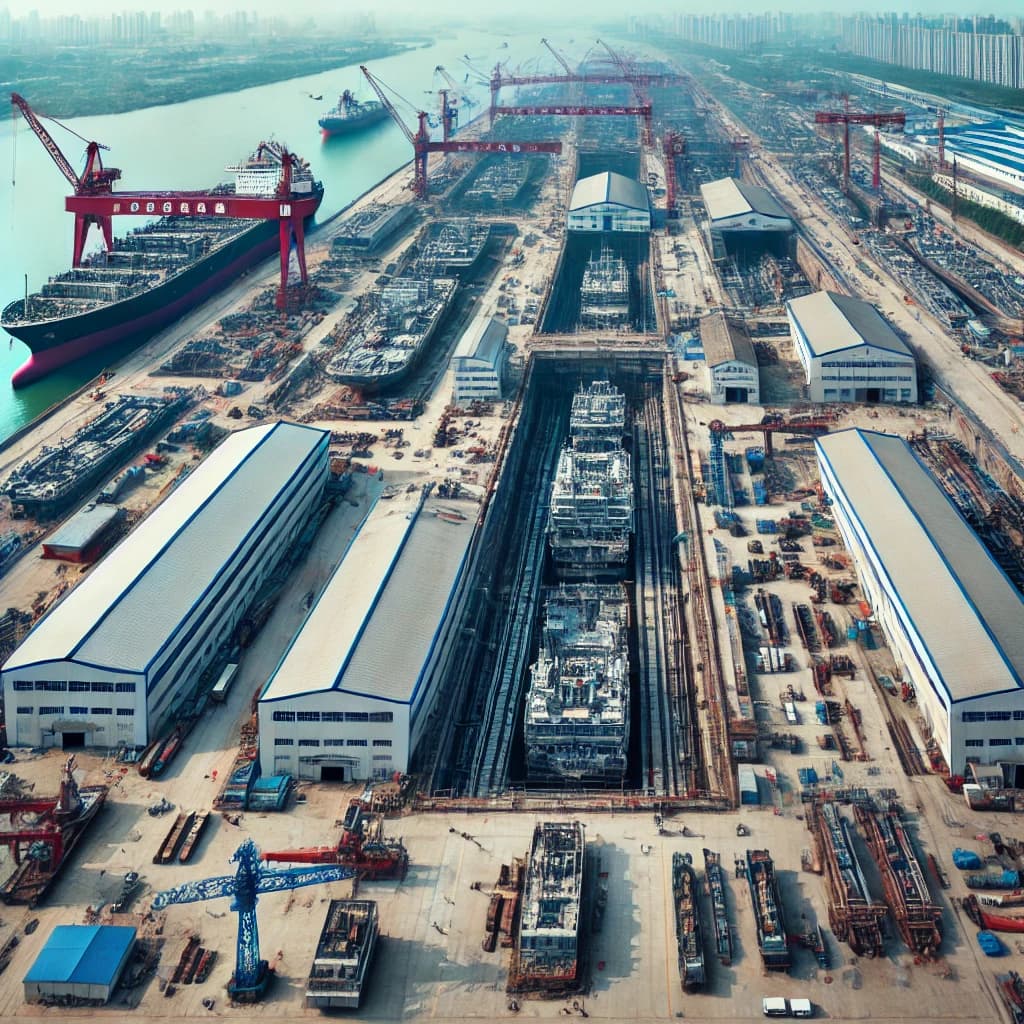Asian Shipyards See Record Orders Amid High Newbuild Prices

Asian shipyards are experiencing a surge in activity reminiscent of the post-financial crisis boom. A recent report from Danish Ship Finance reveals that new vessel deliveries in 2023 hit a seven-year peak, adding 35 million compensated gross tonnes (cgt) to the global fleet. An “astonishing” 43 million cgt is slated for delivery in 2024, a level not seen since the high-output years of 2008 to 2012.
Newbuild prices have been climbing steadily throughout 2024, approaching the nominal peak last seen in 2008. According to Danish Ship Finance, “Newbuilding prices for all major segments are roaming within the top 10% observed since 2000.”
The heavy ordering of container ships and LNG carriers in 2021 and 2022 has strained shipyard capacity, noted a report from VesselsValue. This surge in orders has given shipyards leverage in price negotiations, driving prices higher.
Clarksons data indicates that the average newbuild price in 2024 has reached $90 million, marking a 30% increase from the previous high in 2022 and well above the decade-long average of around $50 million.
Shipyards have seen robust ordering across all sectors this year, with 93.6 million gross tonnes contracted in the first nine months of 2024—surpassing the total orders for both 2022 and 2023. Clarksons projects that more than 100 million gross tonnes will be contracted by year-end, a significant figure though still shy of the record 172 million gross tonnes ordered in 2007.
These trends were a major topic at the recent Maritime CEO Forum held at the Monaco Yacht Club. Tim Huxley, CEO of Mandarin Shipping, commented, “We have current newbuilding prices reaching levels which make them unviable, especially when combined with the forward delivery now being quoted. Is the consolidation we’ve seen among shipbuilders going to allow them to keep prices high? Could shipbuilders suddenly get addicted to profitability?”
Milena Pappas, commercial director of Star Bulk, highlighted the challenges facing the dry bulk sector. Since January 2021, newbuild prices have surged by 50%, while secondhand ship values have risen by “more or less” 90 to 100%. In contrast, freight rates have only increased by 40%. “So that’s a factor right there, putting up a stop for newbuilding orders,” Pappas noted. She also pointed out that shipbuilding capacity is booked for the next three and a half years, making it hard for owners to predict market conditions upon delivery.
Pappas warned that delays are likely, especially since around 50% of current orders are for dual-fuel ships, which require engines that take three times longer to test. “There’s going to be a slippage because of the engine supplies,” she predicted.
Pappas also highlighted the composition of the current merchant ship orderbook, noting that while gas and container ships make up 35% of orders, they account for 66% of the shipyard capacity.
Reflecting on decades of investment experience, Graham Porter, chairman of Tiger Group Investments, told the forum, “I realised we made almost all our money from the bottom of a crisis when the shipyard phoned us, not when we phoned the shipyard. And when the shipyard gives you the best ship at the lowest price today, I would say we’re on the other side of that cycle. You get the ship that the shipyard wants to build, not the one you want to build, and it’s at a high price.”